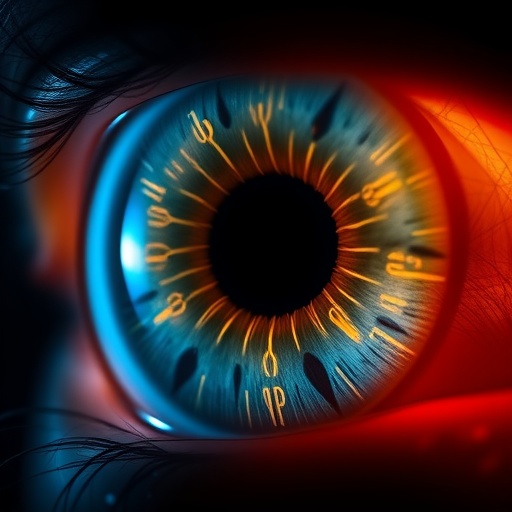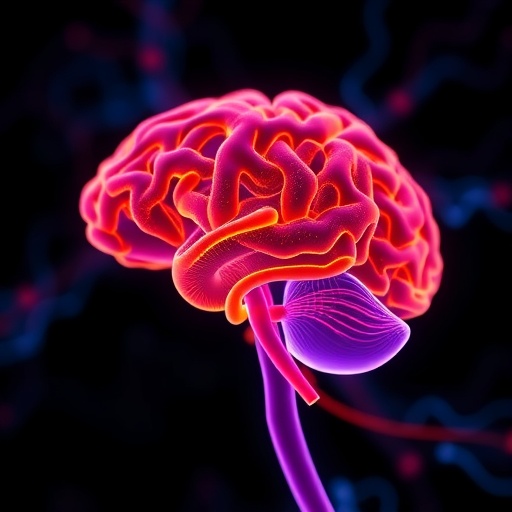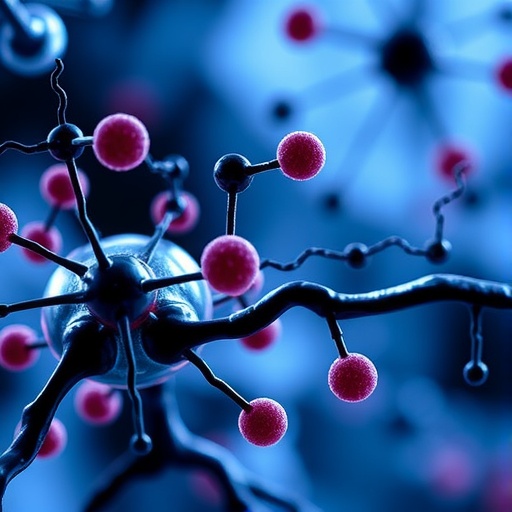Age-related macular degeneration (AMD) stands as the leading cause of irreversible blindness among the elderly worldwide, particularly affecting individuals over the age of 60. Characterized by the progressive deterioration of the macula—the central part of the retina responsible for detailed vision—AMD severely limits the ability to perceive fine details such as reading text or recognizing faces, while often sparing peripheral vision. The atrophic, or dry, form of AMD is especially devastating, as it involves the gradual loss of photoreceptor cells, the light-detecting elements essential for transmitting visual information to the brain. Until now, effective treatment options for this form of the disease have remained elusive.
A groundbreaking advancement in this domain is the Prima neurostimulation system, an innovative visual prosthesis engineered to restore partial sight in individuals afflicted with advanced atrophic AMD. This system comprises a subretinal implant coupled with augmented-reality glasses that work synergistically to convert visual stimuli into neural signals, effectively bypassing the dysfunctional photoreceptors. The device’s potential was convincingly demonstrated in a recent multi-center clinical trial, involving 38 patients across various European sites. The trial results, published in the prestigious New England Journal of Medicine, reveal that the Prima system can restore functional vision in over 80% of recipients, enabling them to read letters, numbers, and even full words once again.
The Prima system’s design was spearheaded by Daniel Palanker at Stanford University and represents a paradigm shift in vision restoration technology. At its core, the system consists of a miniature photovoltaic microchip implant, measuring only 2 millimeters by 2 millimeters and 30 microns thick, embedded beneath the retina. This microchip contains 378 microelectrodes capable of generating localized electrical stimulation in response to infrared light. The patient wears specialized augmented-reality glasses outfitted with a tiny camera that captures real-world images. These images are processed by a handheld computer that enhances contrast, brightness, and zooms the visuals up to twelve times. The computer then converts this processed video feed into an infrared light pattern that is projected wirelessly onto the subretinal implant.
Upon receiving these infrared signals, the implant’s photovoltaic cells convert light energy into precise electrical impulses that stimulate the inner retinal neurons. By directly activating the residual neural circuitry, which remains intact despite photoreceptor loss, the Prima system facilitates the transmission of visual information to the brain’s visual cortex. This approach effectively circumvents the dead photoreceptors, restoring meaningful central vision without compromising the peripheral vision that patients still possess. Importantly, the entire system operates wirelessly, benefiting patients by eliminating cumbersome power sources and enhancing implant longevity.
The recent clinical trial evaluating the Prima device enrolled subjects averaging 78.9 years of age, all exhibiting significant central vision loss with logMAR scores of 1.2 or worse, indicating near-total inability to read standard eye chart letters. Post-implantation assessments at six and twelve months measured visual acuity changes using standardized letter charts commonly employed in ophthalmology. Remarkably, 81% of trial participants achieved at least a 0.2 logMAR improvement, representing a clinically meaningful gain in sight. Furthermore, 78% demonstrated a more substantial enhancement of 0.3 logMAR or greater, translating to reading at least 15 additional letters with the aid of the implant and glasses.
The most impressive single patient outcome was a visual acuity improvement of 1.18 logMAR, allowing for reading 59 more letters than prior to implantation. Beyond acuity metrics, 84.4% of patients reported being capable of reading letters, numbers, and words at home one year after receiving the Prima system. This functional vision restoration represents a monumental stride forward, transcending previous efforts with subretinal prostheses that yielded only modest benefits and often compromised peripheral vision. The Prima system’s unique ability to preserve intact peripheral vision while reinstating central visual perception distinguishes it as a novel therapeutic option for atrophic AMD.
Patient safety and device tolerability remained paramount in this clinical investigation. While 26 serious adverse events were documented among 19 participants, these complications were anticipated based on prior risk analyses. Most adverse effects were ocular in nature, including ocular hypertension, retinal detachments, macular holes, and subretinal hemorrhages. Encouragingly, the vast majority—approximately 95%—of these events resolved promptly, either through spontaneous healing or medical intervention, usually within the first two months following the implant procedure. Overall, patient tolerance was rated highly favorable, supporting the Prima system’s viability for broader clinical application.
The implications of this technology extend beyond mere sight restoration; they offer profound gains in autonomy and quality of life for individuals otherwise condemned to profound visual impairment. By allowing patients to engage with their environment visually once again—through reading, recognizing faces, and navigating daily challenges—the Prima system contributes immeasurably to psychological well-being and social integration. Additionally, the non-invasive wireless design mitigates many challenges associated with prior visual prostheses, suggesting a scalable and patient-friendly approach to combating blindness due to macular degeneration.
Looking ahead, ongoing surveillance of patients wearing the Prima implant will continue up to 36 months to monitor long-term safety and sustained efficacy. The research consortium, including institutions such as Inserm, Sorbonne University, CNRS, Fondation Adolphe de Rothschild, and Stanford University, remains committed to refining this technology and expanding access. Moreover, early exploratory animal studies and pilot clinical trials laid the vital groundwork, validating the device’s biocompatibility and functional integration, thereby accelerating translation to human use.
This breakthrough neuroscience and engineering collaboration signifies a new era in sensory neuroprosthetics. The successful reanimation of the retina’s residual circuitry through sophisticated photonic-electrical conversion and real-time image enhancement demonstrates the power of interdisciplinary innovation. With the Prima system, patients who had previously lost hope of meaningful vision restoration now face a future where they can regain central sight without sacrificing peripheral awareness.
As senior author José-Alain Sahel, a leading ocular researcher affiliated with Inserm and the Institut de la Vision, articulates, “The benefits far outweighed the adverse effects.” He further emphasizes the unprecedented nature of this achievement: “Until now, other types of subretinal implants had been developed, with far less benefit. This is the first time that a system has enabled patients who have lost their central vision to read words and even sentences again, while preserving their peripheral vision.” Such endorsements from experts reinforce optimism that the Prima system will transform treatment paradigms for millions affected by geographic atrophy resulting from AMD worldwide.
In conclusion, the Prima neurostimulation system embodies a monumental innovative leap in the management of atrophic age-related macular degeneration. Through its sophisticated combination of augmented-reality image processing and subretinal photovoltaic microchip stimulation, it restores central vision functionality in the majority of patients, offering a long-awaited therapeutic solution where none existed. As further longitudinal results emerge and implantation techniques mature, the prospect of widespread clinical adoption looms on the horizon, heralding renewed hope for millions enduring the darkness of macular degeneration.
Subject of Research: Vision restoration in geographic atrophy due to age-related macular degeneration
Article Title: Vision Restoration with the PRIMA System in Geographic Atrophy Due to AMD
News Publication Date: 20-Oct-2025
Web References: 10.1056/NEJMoa2501396
Keywords: Human health, Age-related macular degeneration, Visual prosthesis, Neurostimulation, Retina implant, Photovoltaic microchip, Augmented reality, Vision restoration
Tags: advanced atrophic AMD solutionsage-related macular degeneration treatmentaugmented-reality glasses for vision enhancementclinical trials for vision restorationelderly vision impairment solutionsinnovative treatments for blindnessmulti-center clinical trial resultsneurostimulation systems for visionpartial vision restoration for AMDphotoreceptor cell loss in AMDsubretinal implant technologyvisual prosthesis development





